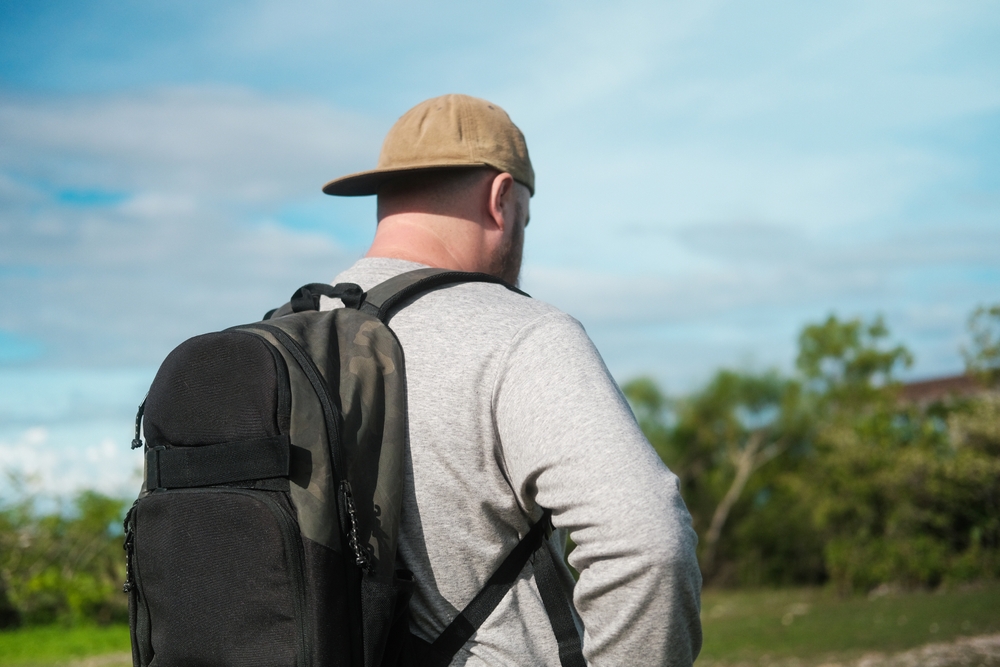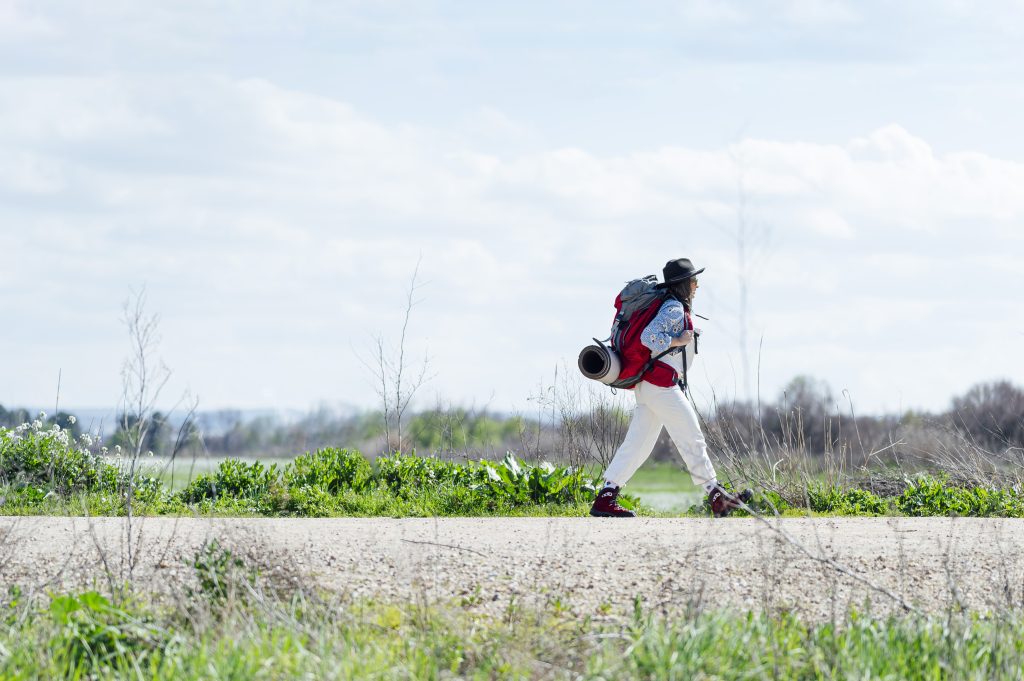A question we often receive from beginners and ruckers working back from an injury is, “How do I progress with rucking?”. Depending on who you ask, you may receive many varying answers on this one.
It is a great question because injuries can easily happen from going too heavy and too long. Mostly, neck, back, knee, and shoulder problems are caused by too much weight (and age).
Here’s my stance: Progress can only be made by staying injury-free. So, limiting injury should be the top priority.
Here’s a guide on how to safely and effectively progress with rucking.

1. Start slow: Weight, Distance, and Frequency
When beginning rucking, the key factors to consider are how much weight you carry, how far you go, and how often you ruck. Slow and steady is crucial. Here’s how to start and increase each component over time.
Weight:
- Start with a manageable weight, generally around 10-20 pounds. This can be achieved with ruck plates, dumbbells, or even household items if you’re just starting out.
- For most, a 5-10% increase every few weeks (or every 5-10 rucks) is reasonable and will allow your body to adapt safely.
Distance:
- Begin with shorter distances—.5-1 mile is a good starting point.
- Aim to increase distance gradually, adding about half a mile every week if you’re rucking at least twice per week. By the end of the first month, you could comfortably be handling a 2-3 mile ruck if progressing well. But don’t push it!
Frequency:
- Start by rucking 1-2 times per week to allow your body to recover between sessions.
- Gradually increase to 3-4 sessions per week, depending on your fitness goals and recovery time.
2. Perfect Your Rucking Form
Like any form of exercise – good form is crucial to avoid injuries and maximize efficiency, especially as weight and distance increase. Poor form an quickly lead to nick, back, and shoulder issues.
Key Form Tips:
- Posture: Keep your shoulders back and down, and avoid hunching forward under the weight.
- Stride: Take shorter, controlled steps rather than long strides, which can strain the lower back and knees.
- Pack Position: Ensure the weight sits high on your back and close to your spine. This reduces the strain on your lower back and distributes weight evenly.
- Core Engagement: Engage your core as you walk to maintain stability and support your back.
Adjusting Your Pack: As your load increases, make sure your rucksack fits properly and has padding where needed to prevent discomfort. Adjust the hip belt and sternum strap for optimal weight distribution.

3. Adding Interval Training for Intensity
After you get your form perfected and you start building endurance, adding intervals to your rucking workouts can boost cardio fitness and build strength without requiring extra weight.
Interval Training Techniques:
- Weighted Intervals: Alternate between regular walking and bursts of quick-paced walking or even jogging (if your joints allow it) while carrying your ruck.
- Incline Rucking: Find a hill or a treadmill with an incline feature and do ruck intervals at an incline to simulate rough terrain and build leg and core strength.
- Time-Based Intervals: Walk at a regular pace for 5 minutes, then push yourself with a faster pace or heavier effort for 2 minutes, repeating for the length of your ruck.
Gradually increase the duration and frequency of these intervals over time to maintain steady progress in strength and stamina.
4. Gradually Increase Weight and Distance
Once you feel like your ruck routine has reached a plateau, use progressive overload to safely increase the challenge.
Increasing Weight:
- Every 3-4 weeks, consider adding an additional 5 pounds if you’re feeling strong and maintaining good form.
- As your weights increase, your distances may need to decrease temporarily. Adjust these until you feel confident managing both the added weight and distance.
Increasing Distance:
- For endurance gains, work up to longer distances before adding too much weight. Add an extra mile every two weeks or so to gradually condition your body.
- By gradually working up to 6-10 miles with a lighter weight, you’ll build a solid endurance base before increasing the load.
5. Vary Your Terrain for Extra Challenge
To become a well-rounded rucker, don’t stick to flat, predictable terrain. Adding varied terrain like trails, hills, and even sand can help build different muscle groups and prepare you for any environment.
Types of Terrain to Try:
- Hills or Inclines: These are great for building leg strength and increasing cardio intensity. Start with short, gentle hills and progress to steeper inclines.
- Sand or Soft Ground: Sand requires more effort to walk on, which can increase lower body strength. Start with a shorter ruck on sand to gauge how it impacts your muscles.
- Uneven Trails: Trail rucking builds ankle strength and stability. It also trains your body to adjust to varied ground, which improves your overall agility and balance.
Prioritize Recovery
I cannot stress this enough – Recovery is key as you increase your rucking workload. Overloading your body without rest can lead to injuries, fatigue, and burnout.
Listen to your body and take time off as needed or do a walk or hike without weight instead. Also, stretch your hamstrings, quads, shoulders, and back after each ruck to improve flexibility and reduce soreness.
Make sure to take at least 1-2 rest days per week to let your muscles recover.
Track Progress
Monitoring your progress helps keep you motivated and ensures you’re moving forward safely. Track your weight, distance, time, and the terrain type after each ruck.
I personally use my Apple Watch to track my pace, calories, and heart rate but any fitness tracker or fitness app should work to see how you are progressing over time.
Wrap-up
Progressing with rucking is all about consistency, gradual increases, and listening to your body. By steadily increasing weight, distance, and intensity, you can safely enhance your strength and endurance. Remember, there’s no rush; building up gradually helps you avoid setbacks and makes the process enjoyable. So get out there, track your progress, challenge yourself, and keep rucking stronger each time.



